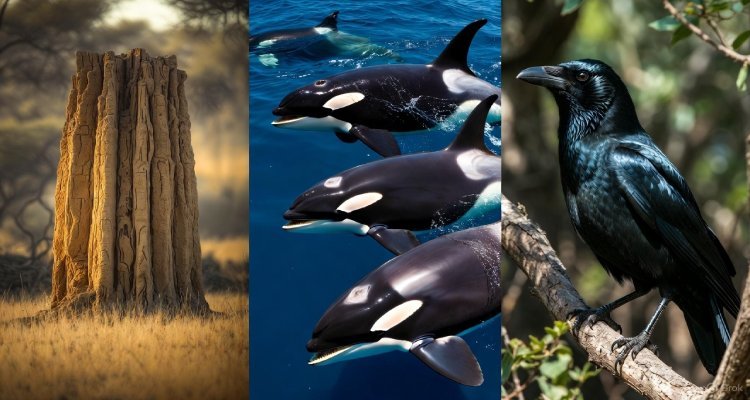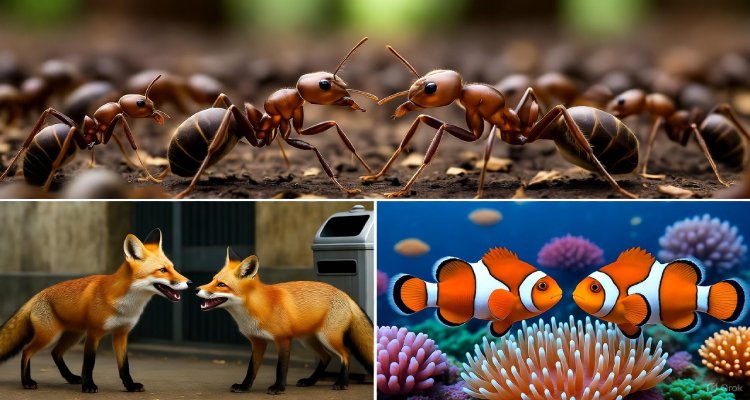: The Silent Animal Wars Happening All Around Us
Beneath the calm of nature lies chaos — a hidden world where animals wage silent wars for territory, survival, and dominance. Here’s what science reveals about this unseen battlefield.
The Unseen Battlefields of Nature
You might think the wild is peaceful — birds singing, deer grazing, rivers flowing. But beneath this calm exterior, nature hums with constant conflict. From forests and oceans to city parks and backyards, animals are engaged in quiet, relentless wars — not out of malice, but survival. These silent animal wars shape ecosystems, alter evolution, and even impact human life in ways most of us never notice.
Nature’s Hidden Arms Race
Predator versus prey may be the most familiar story, but animal warfare goes far beyond lions chasing zebras. Across species, animals fight for food, mates, and dominance — sometimes using sophisticated tactics that mirror human strategy.
In the African savannas, ants wage territorial wars that can last for weeks, sending armies of thousands into battle. In coral reefs, clownfish colonies engage in covert skirmishes over breeding sites. Even seemingly docile creatures like songbirds engage in brutal air duels over nesting zones.
According to National Geographic, such conflicts often occur in silence — subtle signals, vibrations, or pheromones replace roars and howls. To the untrained human ear, it’s as if nothing’s happening at all.
City Wars: Animals on the Urban Frontlines
As humans expand cities, wildlife adapts — and sometimes clashes. Urban environments have created new kinds of conflict zones. Raccoons battle stray cats for alleyway territory. Pigeons compete for limited nesting ledges. Foxes, coyotes, and even monkeys fight silent turf wars in the shadows of skyscrapers.
A 2024 study by the Journal of Urban Ecology revealed that animal confrontations in metropolitan areas have increased by 27% in the past decade — a direct result of habitat overlap and shrinking natural spaces. These conflicts rarely make headlines, yet they redefine how animals — and humans — share space.
When Survival Turns Strategic
In these silent wars, intelligence often outweighs brute strength. Crows, known for their problem-solving abilities, form alliances to raid food caches of rival flocks. Dolphins coordinate attacks on competing pods through synchronized movements and sonar deception — essentially a marine form of psychological warfare.
“Many species now display what we can call strategic conflict,” says Dr. Elena Roth, a behavioral ecologist at Cambridge University. “It’s not random violence; it’s calculated survival — every move is evolutionary intelligence at work.”
Even plants join the fray. Trees release chemical signals to warn neighbors of insect attacks, prompting a defensive response. In forests, root systems silently compete for water and nutrients — a slow, invisible war beneath our feet.
The Ripple Effect on Ecosystems
Every animal conflict has consequences. When dominant species win too often, biodiversity can collapse. For instance, when invasive fire ants overrun native species in the southern United States, local insects and birds lose critical food sources, triggering ecosystem imbalance.
Similarly, coral reefs — often described as “underwater cities” — suffer when territorial fish drive out algae grazers. The result? Coral bleaching and oceanic decline. These wars may be silent, but their impact echoes across food chains and continents.
Expert Insight: What Scientists Are Discovering
Modern tracking and AI-based acoustic monitoring now allow scientists to “listen” to nature’s hidden wars. Devices detect vibrations, calls, and stress sounds that were once imperceptible.
“We’re realizing that animal behavior is far more organized — and conflict-driven — than previously understood,” explains Dr. Marcus Lin, lead researcher at the International Wildlife Sound Project. “In some areas, the forest never truly sleeps; it’s an ongoing negotiation for survival.”
Public fascination with these discoveries is growing. Online platforms like EarthArchive and BBC Planet Earth Live have dedicated sections to these subtle ecological dramas — captivating audiences who once thought the animal kingdom was all harmony and beauty.
Why It Matters to Humans
Understanding these hidden wars isn’t just academic — it’s vital for conservation. Every skirmish tells scientists how species adapt, migrate, and survive climate stress. These patterns help predict ecological collapses before they happen.
In cities, mapping animal conflict zones can prevent human-wildlife confrontations and improve coexistence strategies. For instance, Singapore’s “Urban Wildlife Management Plan” uses behavioral data to separate competing species and reduce animal aggression near residential areas.
The Future of Peace in the Wild
While we can’t stop nature’s instinctive battles, we can protect the balance that keeps them from spiraling into extinction-level events. Conservation corridors, rewilding efforts, and smarter urban planning can ensure these silent wars remain part of a functioning, resilient planet.
As Dr. Roth puts it: “Conflict in nature isn’t evil — it’s equilibrium. But when humans disrupt that balance, even the quietest wars can turn catastrophic.”
The next time you walk through a park or hike a forest trail, remember — the world around you isn’t still. It’s alive with unseen rivalries, strategies, and survival stories playing out every second.
Disclaimer:This article is based on current ecological research and expert commentary. It is intended for educational and informational purposes only.











